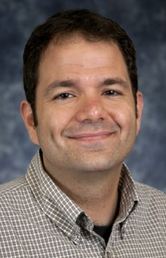 Jason Boone is coordinating minister for the Peace and Justice Support Network.
Jason Boone is coordinating minister for the Peace and Justice Support Network.
The April Come and See Learning Tour was my first time in Israel-Palestine. I wasn’t expecting to be surprised by anything particular. I keep abreast of the situation through mainstream media and organizations working there, including Mennonite Central Committee and Christian Peacemaker Teams. So I never feel as if I only get one side of the conflict or that I am not being shown the whole picture.
As it turns out, I wasn’t surprised, but I was heartbroken. Yes, the images of occupation I’d seen in newsletter and reports are accurate and distressing. Economic and material hardship abound. Checkpoints, guard towers and armed military leave a sense of dread in the air.
What I couldn’t understand until I was there was the dehumanizing nature of the conflict. Palestinians are treated as less than human, deprived of basic human rights and dignity. All that culminates in the feeling that Israel refuses to acknowledge the image of God present in their Palestinian brothers and sisters. That realization hit me in the gut. How can there be peace and justice in Israel-Palestine, anywhere for that matter, built on that foundation? I was saddened and angered at what Palestinians have to endure.
I was also saddened and angered when we visited Yad Vashem, the Holocaust museum and memorial. It recounts that too recent time when Jews were treated as less than human, deprived of basic rights, not seen as made in the image of God – culminating in a tragedy of historic proportions. When we spoke to an Israeli settler, I could feel the fear and anger as he spoke of pogroms, the Holocaust and suicide bombers. I didn’t see him as a person who derives joy out of Palestinian suffering. I saw a person living in uncertainty and wrestling with the fear that brings.
It would be easy if there were a clear line in the sand: here is good, here is evil. I couldn’t find that line. The evil is the conflict, the violence, the injustice. And everyone suffers because of it.
But I did see hope. I saw hope in the small Palestinian village of At-Tuwani in the south Hebron hills that is dedicated to non-violence. I experienced hope in the hospitality that flows so easily in that part of the world.
I saw hope in the Parents Circle Family Forum, a group of parents, Israeli and Palestinians, who have lost children in the conflict. That shared suffering brings them, after journeys through grief, sadness and anger, to a place of compassion that allows them to love people because they are made in the image of God, not because they are on one side or another of the conflict. I saw hope in the Christians who wrote the Kairos Palestine appeal. Naming the structures of injustice with unflinching honesty, they are committed to confront injustice with love in the spirit of Jesus. I saw hope in Israelis and Palestinians who have decided not to let fear and anger dictate their lives, and refused to see anyone as less than human.
My prayer after returning from Israel-Palestine is that the image of God will be seen by everyone, in everyone, at all times, and in all places.

